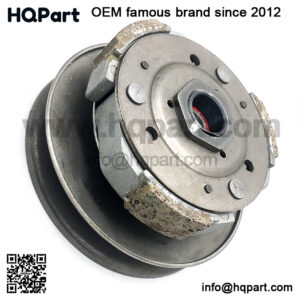What Are the Different Types of Clutches Available?
Clutches facilitate the transmission of power by engaging and disengaging the shaft of the driving component with the shaft of the driven component. However, the power transmission mechanism and method vary depending on the type of clutch.
Clutches can be categorized into two main classifications: friction clutches and fluid flywheel. Friction clutches rely on the principle of friction. The friction between the driving component shaft and the driven component shaft when they are engaged (i.e., brought into contact) allows the rotational energy to transfer from the former to the later. Fluid flywheels utilize a hydraulic fluid to transfer torque from the driving component to the driven component.
Friction clutches and fluid wheels can be further broken down into sub-types. Some of the most common types of friction clutches are:
- Manual clutches. Manual clutches must be engaged and disengaged by the machine operator. They are suitable for applications where engagement and disengagement must occur at a specific or consistent rotational speed.
- Hydraulic clutches. Hydraulic clutches utilize hydraulic fluid (e.g., oil) to extend and retract pistons, which engage and disengage the clutch. They are suitable for hydraulic systems where engagement and disengagement must occur at a specific or consistent rotational speed.
- Electric clutches. Electric clutches convert electrical energy into mechanical energy. The electrical power source passes a current, which generates an electromagnetic field. The generated electromagnetic field then attracts a pressure plate, which engages the clutch. The clutch disengages when the power source stops passing a current. These clutches are suitable for use in applications where engagement and disengagement must occur at a specific or consistent rotational speed and with a readily accessible power source.
- Centrifugal clutches. Centrifugal clutches automatically engage and disengage when the proper rotational speeds are achieved. They are suitable for applications requiring engagement and disengagement at moderate or inconsistent rotational speeds.
Applications of Centrifugal Clutches
Centrifugal clutches engage and transmit rotational energy between the power source and the connected device or system only once the input speed reaches a set value. If the input speeds fall below the set value, the clutch disengages and ceases power transmission. This design makes them appropriate for use in applications requiring a soft start or stop without load.
Compared to other types of clutches, the automatic centrifugal clutch design offers many advantages, including easier operation, lower maintenance and servicing costs, smoother acceleration, and greater engagement speed control. These qualities make centrifugal clutches well-suited for use in a variety of applications, including, but not limited to, the following:
- Compact road and street cleaners
- Compressor, vacuum, and fan drives
- Mobile water pumps
- Transport refrigeration units (TRUs)
- Trowel and concrete finishers
- Vibratory plate compactors and rollers
- Woodchippers, stump grinders, and milling cutters

